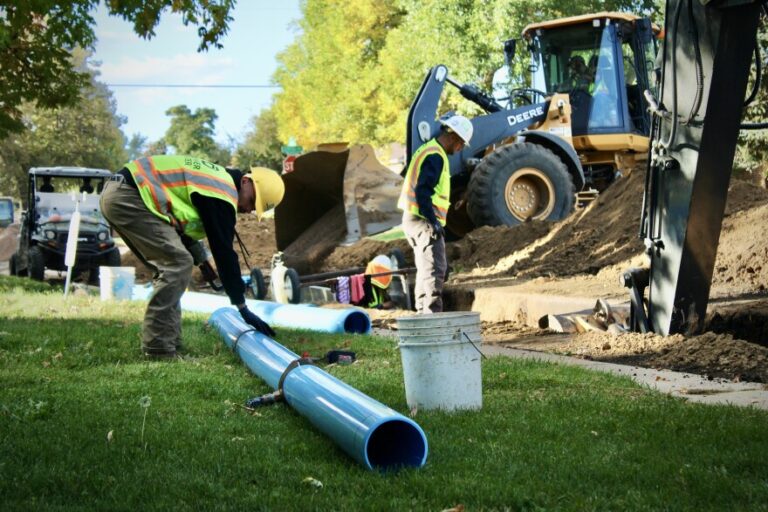Workers install new PVC pipe under a street in Denver on October 11, 2023. Denver’s water department has planned nearly $2 billion in upgrades over the next decade. Many cities in the region are also facing costly infrastructure repairs that will drive up water bills in the coming years. Alex Hager/KUNC
Tap water is cheap. Maybe too cheap.
Municipal water departments in the Colorado River basin are entering a time of change. Their infrastructure is aging and needs replacement, and they’re starting to invest in new systems that will help cities adapt to a future with a smaller water supply. But, that means big spending and costs that will get passed along to the millions of people who use that water in sinks, showers and sprinklers.
“There’s literally nothing else you can have 1,000 gallons of delivered to your house at two in the morning for a few bucks,” said Mark Marlowe, water director in Castle Rock, Colorado.
Marlowe and other water experts across the arid West agree, the amount you pay for tap water should probably go up, and likely will over the next few decades — in large part due to aging infrastructure.
“Our utilities are, at this point, middle aged,” said Kathryn Sorensen, former director of the water department in Phoenix.
Major cities in the arid West – Phoenix, Denver, Las Vegas, and others – saw significant population booms on the heels of World War II. Pipes and other water delivery systems were rolled out quickly, and are starting to reach the end of their lives.
“All of this is very expensive infrastructure,” said Sorensen, who now researches water policy at Arizona State University. “It’s concrete, it’s iron, it’s steel, and it needs to be replaced. And the cost of all those materials, the cost of labor, the cost of construction, have all gone up.”
Those costs are likely to be spread out across water ratepayers, Sorensen said. Even though rate hikes can be politically unpopular, failure to pay for necessary upgrades to water systems could lead to pipes crumbling even further.
Upgrades in action
On a cool fall morning in Denver, hulking construction trucks are sending dust up into the early beams of sunlight. An excavator is ripping up the road, and a group of yellow-vested workers is down in the trench it leaves behind, laying bright blue PVC pipe.
Here, in a quiet residential neighborhood, infrastructure upgrades are happening in real time.
The 77-year-old water main getting replaced is a small part of […]
Full article: www.kunc.org

